OCEAN SERIES
Wall sculpture, steel and industrial paint, diameter 110cm
2020
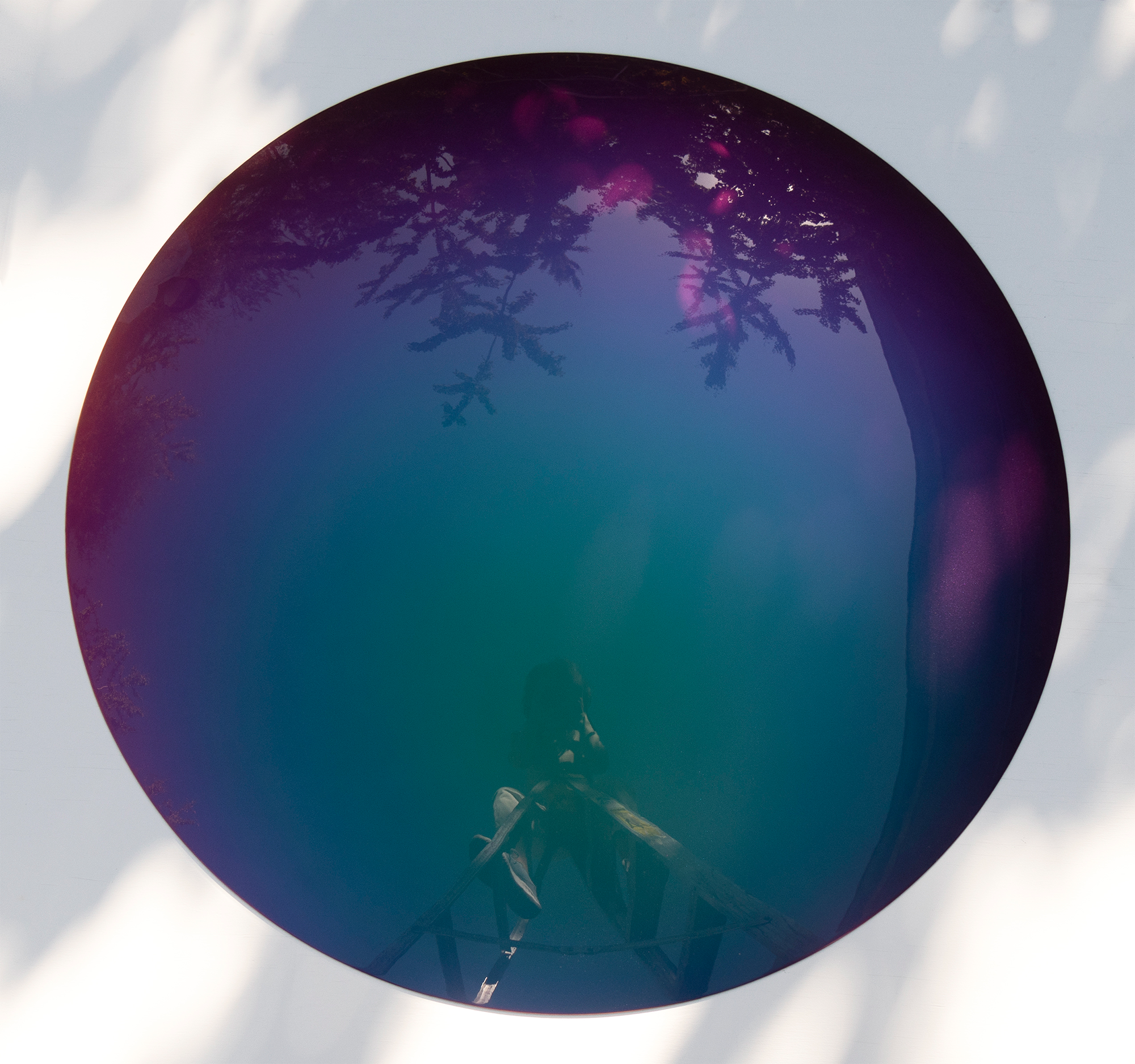
Front and side views with light effects.
Photo: Macarena Ruiz-Tagle
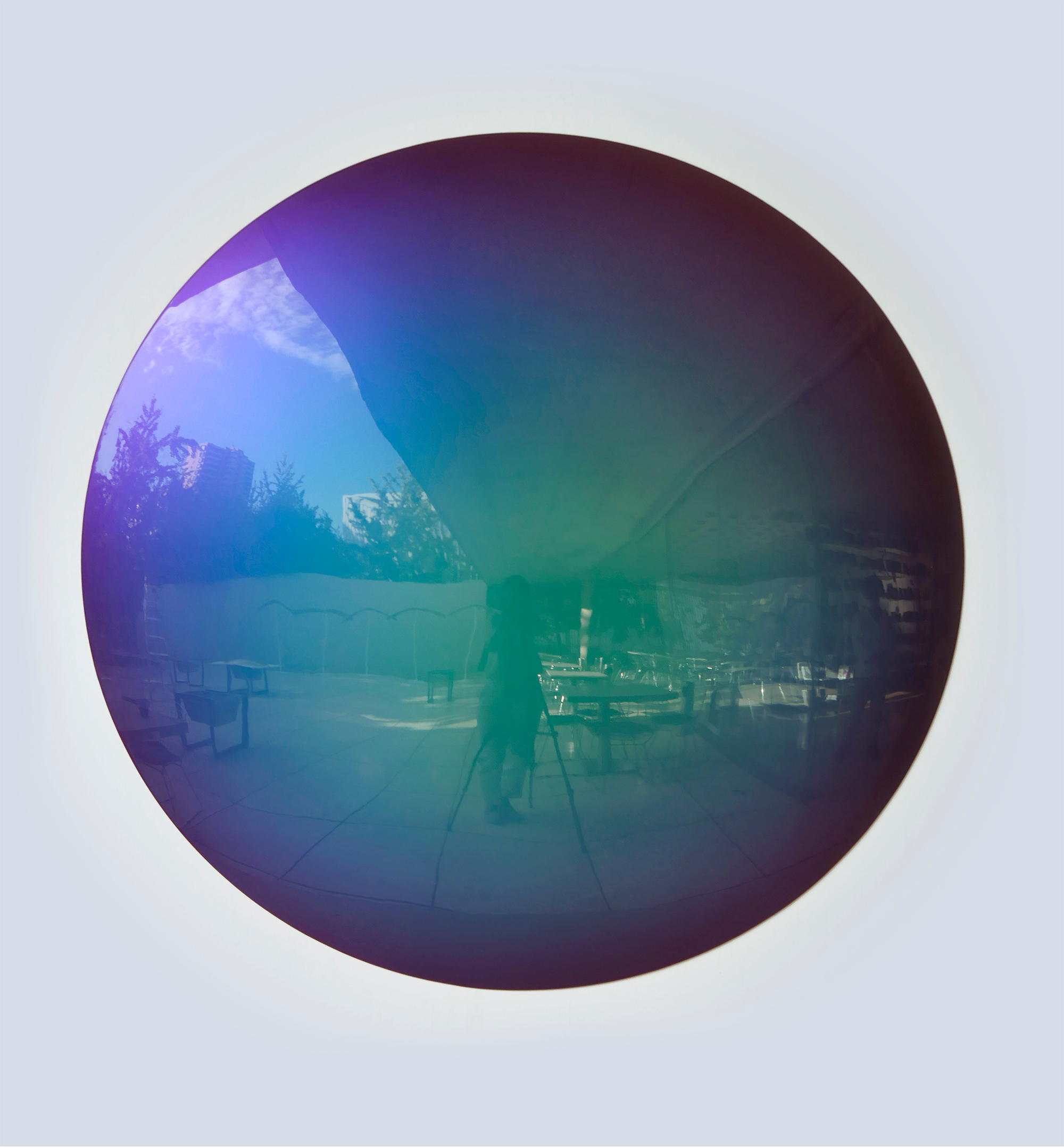
Front and side views with light effects.
Photo: Macarena Ruiz-Tagle
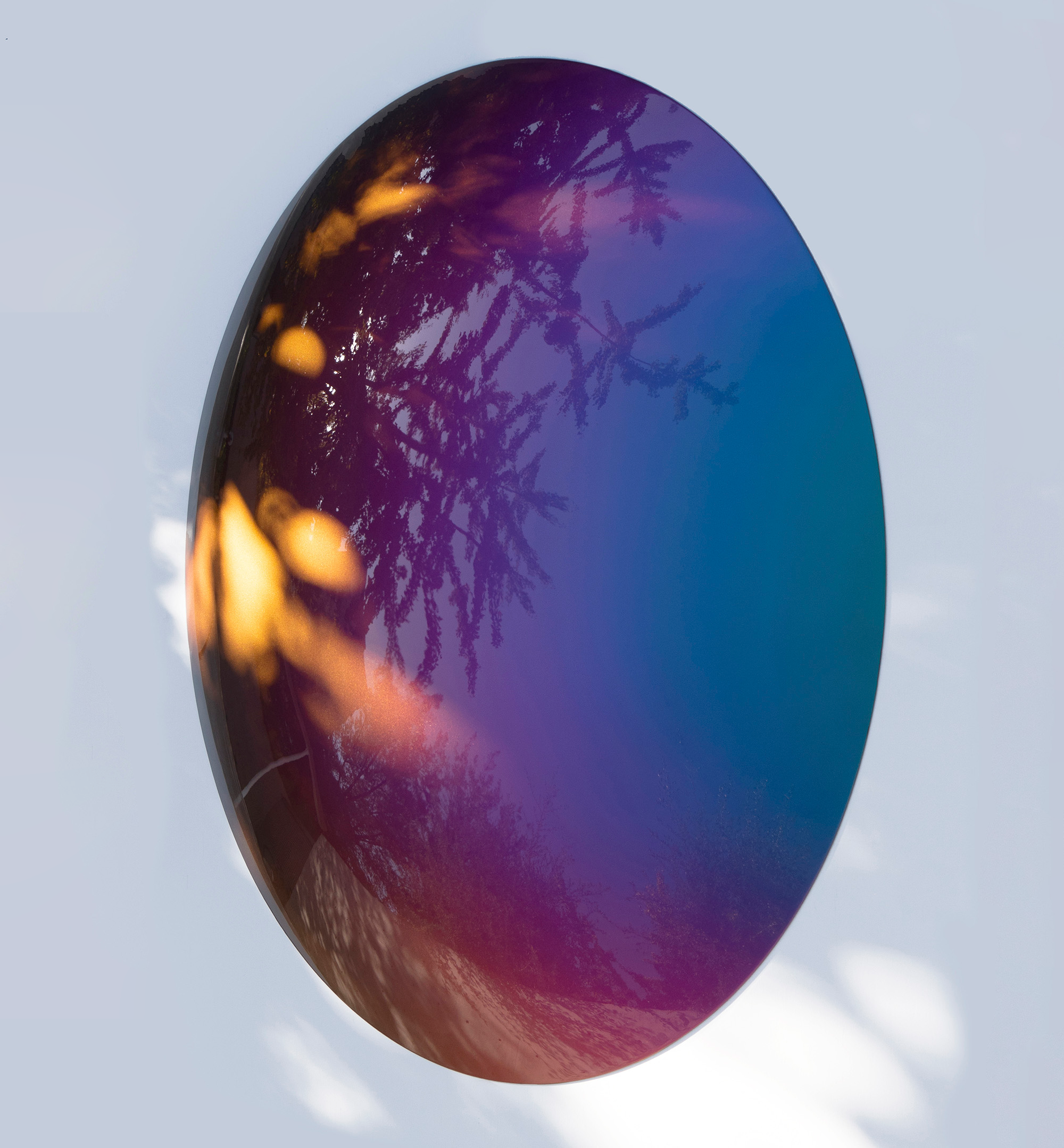
Front and side views with light effects.
Photo: Macarena Ruiz-Tagle
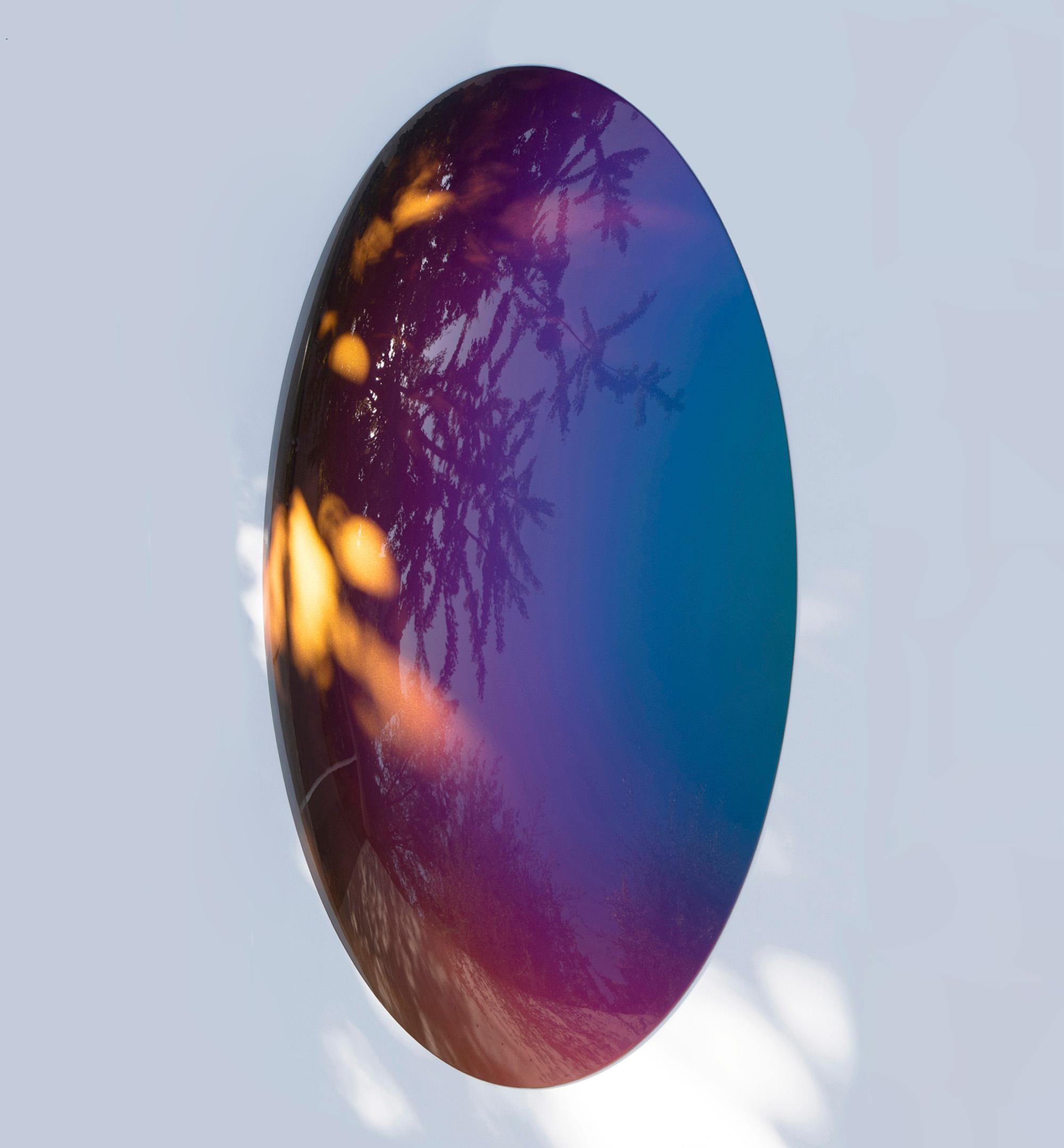
Front and side views with light effects.
Photo: Macarena Ruiz-Tagle

Front and side views with light effects.
Photo: Macarena Ruiz-Tagle
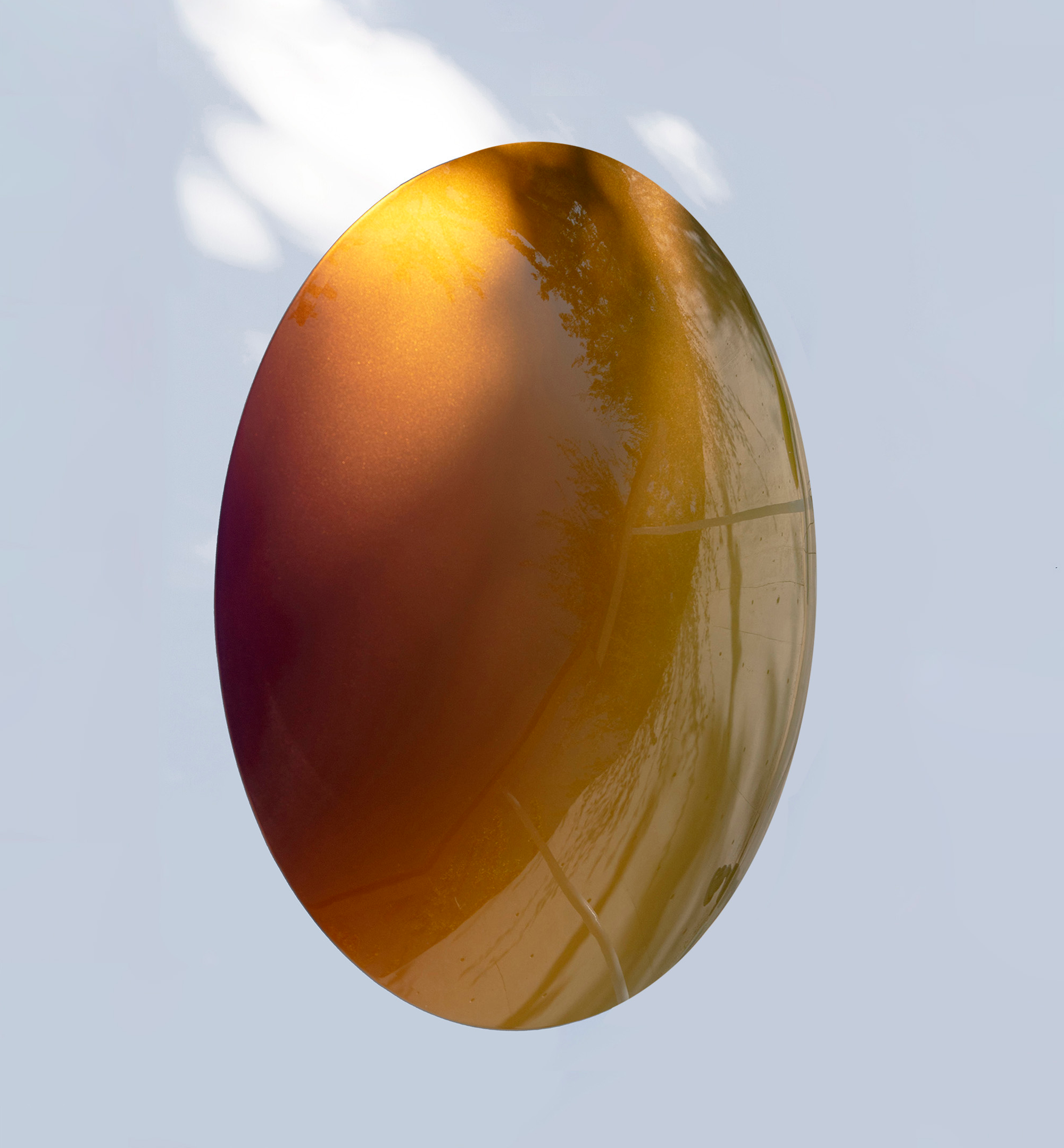
Front and side views with light effects.
Photo: Macarena Ruiz-Tagle
" It requires a luxury of space to form a horizon. Not only a luxurious distance for looking, but it also requires an excess of space to be compressed into a single line. All that space: one line. A horizon is a crease of colour made by space folding into itself. A horizon requires a vista. And almost nothing in between. Once you break from looking, you must bring gravity back to your own body —limb by limb—which may become untethered momentarily into the vanishing distance.
There is a town at the edge of the sea, where each evening crowds of people gather together to watch the setting of the sun. It is the occurrence of brilliant, transparent light being broken into distinct colours against the brim of the ocean.
Seeing is not a solitary activity. People take turns with language, trying on each other how their own words of radiance resonate with the perceptions of the other. It is not uncommon to hear arguments about the nature of mauve, and whether it is slipping against the cloud more quickly than the orange— colour of lily pollen—or the orange—colour of carrot peel.
No, seeing is not solitary. It is suspected that the people watch the sunset in such great number for safety. To assure that no one is lost into that vanishing distance of colour made event.
We are not colours. Or light.
We will stand next to each other to confirm that we are solid. We will touch one another in the dark to remind ourselves that we have not also extinguished with the disappearance of the light.
It is not just darkness that threatens existence. In that exorbitant distance of space that produces a horizon, there is a glut of light. In a house made of windows, the cruelty of light becomes apparent. The pigments of textiles and wood pale and evaporate with time—as if the sun must devour all the colours of everything you own in order to make a new sunset.
You know to look for cover when the sun is hungry.
To be threatened by the sun is the same feeling of being watched. A gaze that destabilizes your body— like being absorbed by
an eye.
Last night the sunset looked like the painted eyelid of that woman who works at the market on the corner. With her gaze cast down as she tap tap taps the sums of your purchases into the register, her eyes are like a sky just moments after the sun has sunk under a deep black, lashed line of horizon.
Then she turns her eyes directly to you. The horizon has opened into an orb of golden colour with immeasurable depth. It is just an ordinary eye—and yet. You cannot tell what of you is being reflected and what of you is being absorbed into her vision. There is space in all that colour you do not know how to measure.
This evening you decide to paint your own eyelids. You brush pigments mixed with crushed insect wings and minerals along the brim of your skin. You close your eyelids and it is all red velvet. You turn your face to the sky with the hope that the sun will choose the same colours you did. "
Text: Caitlin Berrigan
Fragment of: "Horizons"
Year: 2015